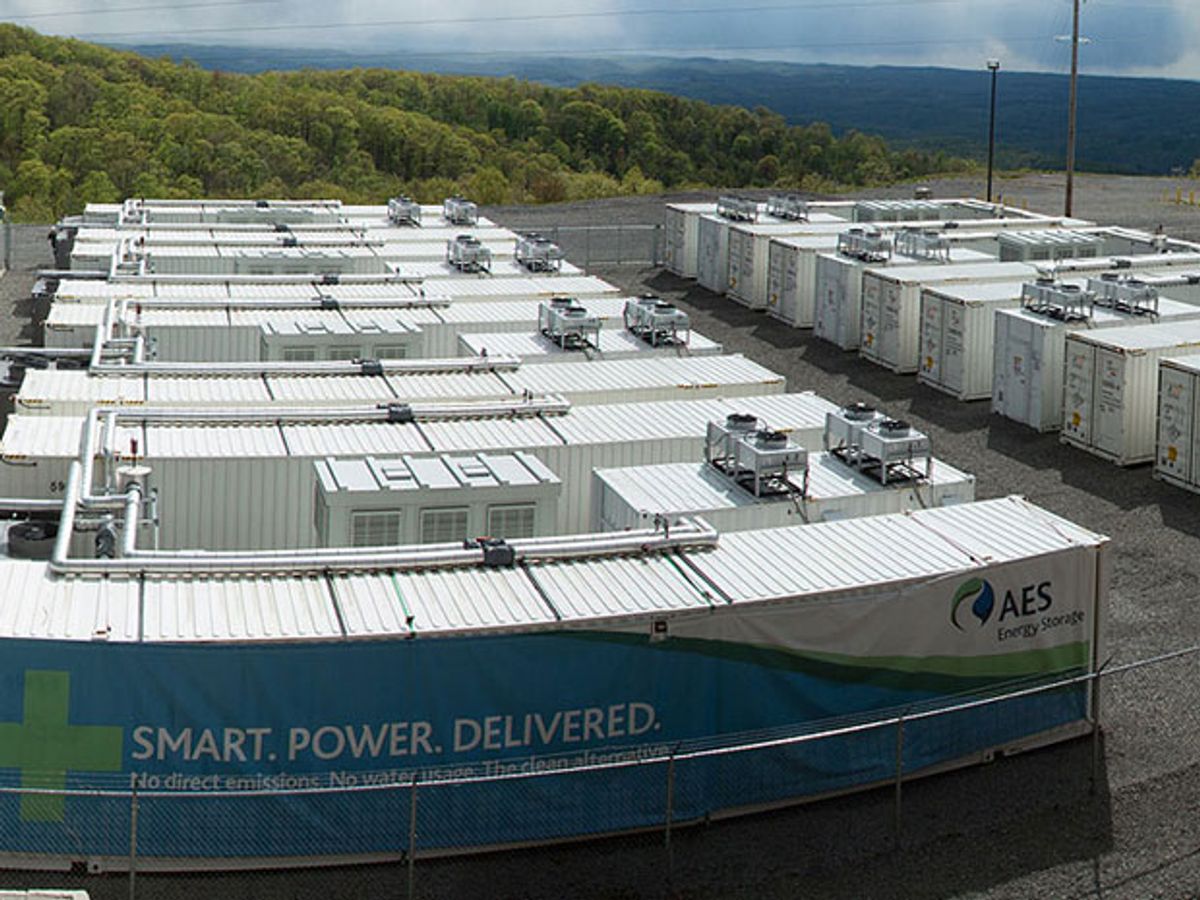High costs have limited the use batteries in the electricity grid, but emerging technologies will make batteries a more compelling way to supply power during hours of peak demand. And they'll do it soon, say battery firm executives.
Utilities and energy project developers are now considering batteries as alternatives to traditional grid infrastructure, such as substation upgrades and natural gas-fired “peaker” power plants that only run a few days a year, according to industry executives who spoke at the Utility of the Future conference in Washington D.C. last week. Once the price of energy storage goes below US $300 per kilowatt-hour, batteries could transform how power is delivered, they said.
"You're seeing the price points going down and the capability to monetize the benefits of storage going up," said Steve Hellmann, president of Eos Energy Storage, which makes a zinc-air battery. "Once those two lines cross, there's no turning back." Hellman predicted that within five years there will be no need to build new peaker plants that operate during times of maximum demand, such as very hot days in the summer when the air-conditioning load is very high.
Although vital to keeping power service reliable, these generators deliver the most expensive power and tend to run inefficiently. In New York City, for instance, several gigawatts worth of power generation were used only 29 hours last year, said William Acker, executive director of NY-BEST, a New York state-backed battery research consortium.
Battery systems could supply power during those critical hours and provide other services to the grid the rest of the year. For example, a battery can earn money with ancillary services, such as balancing minute-by-minute changes in the grid’s supply and demand to maintain a steady frequency.
Already, batteries are cost effective for ancillary services in some regions, said Chris Shelton, president of AES Energy Storage, which now has 174 megawatts of truck-size lithium ion batteries installed. Among its projects is a 32-megawatt battery attached to a wind farm that serves to smooth out the power supply from the wind turbines and provides frequency regulation services to local grid daily.
In general, utilities are slow to adopt new technology. But there have been significant regulatory changes in the past year that are creating demand for energy storage. California requires utilities to install energy storage as an alternative to conventional investments in power lines or generators. Hawaii and New York, which has problems getting enough power into New York City, are areas that have become proving grounds for new types of batteries.
Billions of dollars are spent every year on peaker plants, but changing regulations will prompt utilities to consider batteries as an alternative, Shelton said. “When that check book comes out, there needs to be a prudent consideration for storage,” he said. “It costs little to say: ‘Look at storage without subsidies or incentives.’” Also, battery projects can be installed in a year, often much faster than building a new power plant.
A number of companies are working on batteries that can supply power for several hours, which makes them more compelling to utilities and renewable energy project developers. Earlier this month, for example, flow battery company EnerVault said it expects to sell a battery at a cost of $250 per kilowatt-hour that can work for four or more hours. That makes it a possible alternative to peaker plants or a way for wind and solar farms to supply the grid at peak hours when power is most expensive, the company says.
Lithium ion batteries are more expensive, but the costs are coming down steadily, said Archan Padmanabhan, manager for stationary energy storage at Tesla. The electric carmaker intends to build a “gigafactory” for lithium ion batteries that would effectively double the global manufacturing volume of lithium ion batteries.
“We are quite certain it will feed into utility-scale energy storage,” Padmanabhan said. “As the costs curves go down—and I think they will go down more rapidly than we’ve seen in solar—it opens up more applications for storage.”
The pace of technology development in batteries is speeding up as well, said Glen Merfield, platform leader for energy storage technologies at GE Global Research. Nickel cadmium batteries took 25 years to go from lab to commercialization, while nickel metal hydride batteries used in hybrid cars took 20 years, and the lithium cobalt oxide batteries used in consumer electronics took 12 years.
Now with nanotechnologies and advanced manufacturing techniques, the development time “from lab beaker to full maturity” is on the order of eight years, he said. Technical advances can affect the economic viability of batteries in other ways than the purchase price. Doubling the life of a battery effectively cuts the cost of energy in half, Merfield said.
AES Energy Storage’s Shelton noted that grid-scale batteries are coming at a time when utilities need to upgrade the aging electricity infrastructure and, in some cases, incorporate more renewable energy. “You can update the transmission planning and avoid unnecessary generation. I think it’s going to create an incredibly resilient system that’s more fully utilized,” he said.



